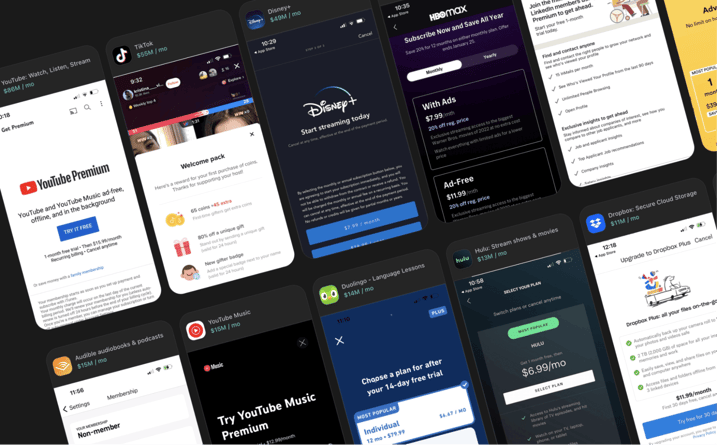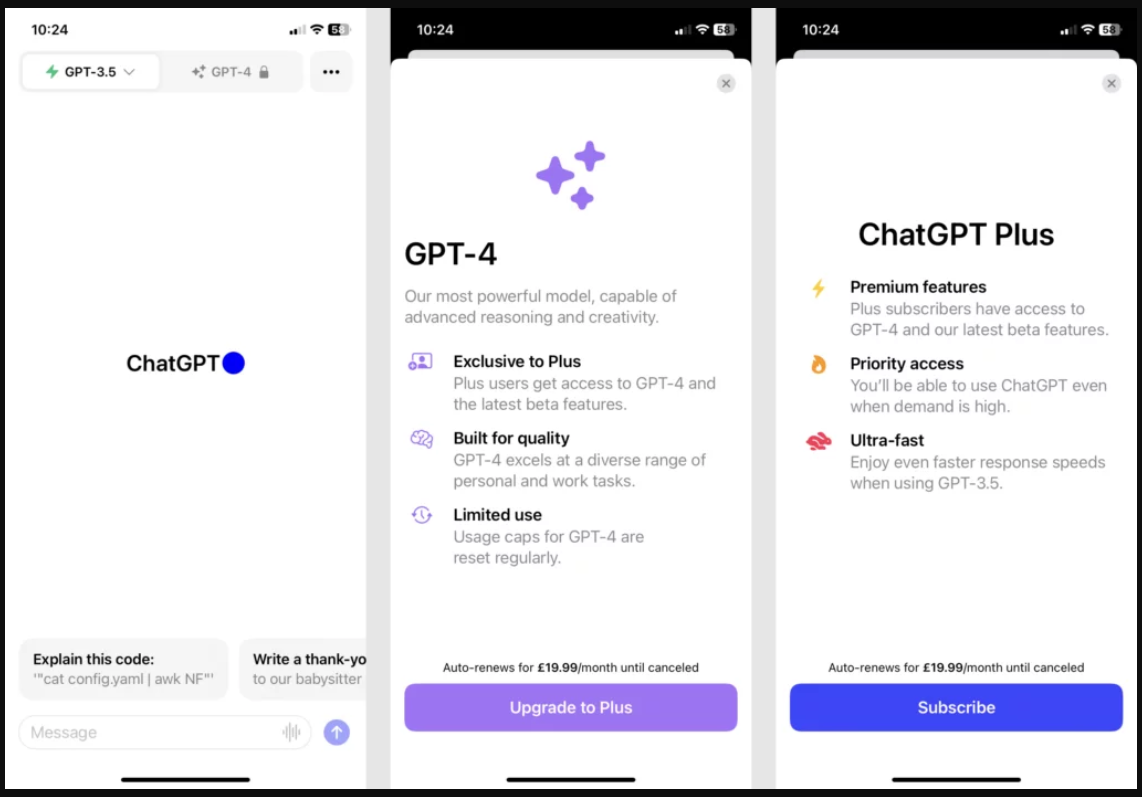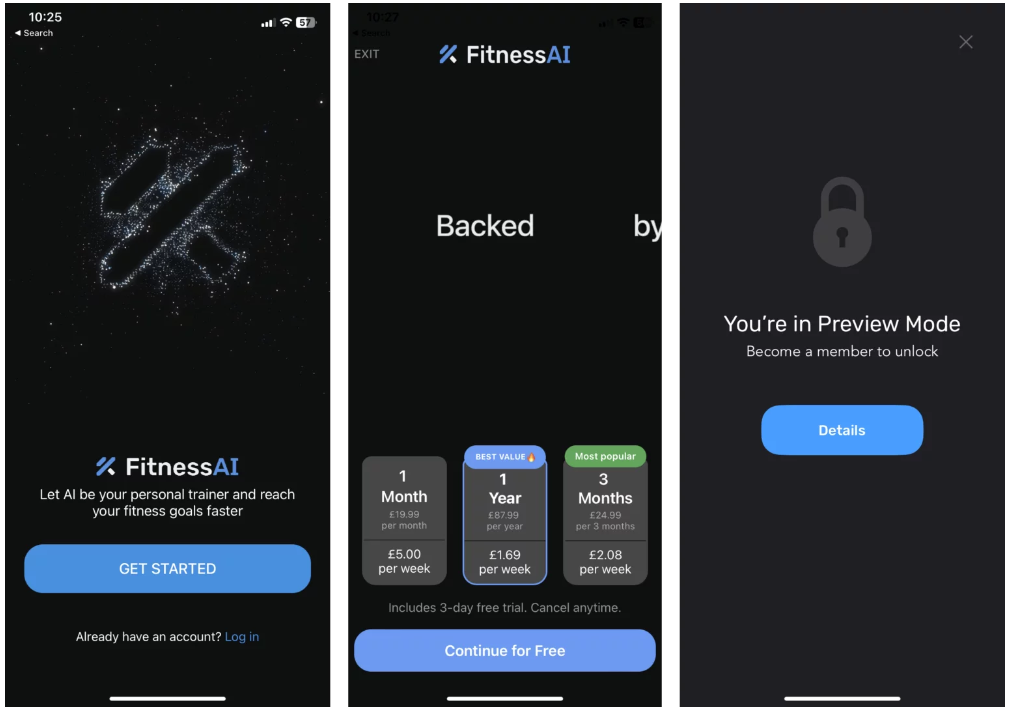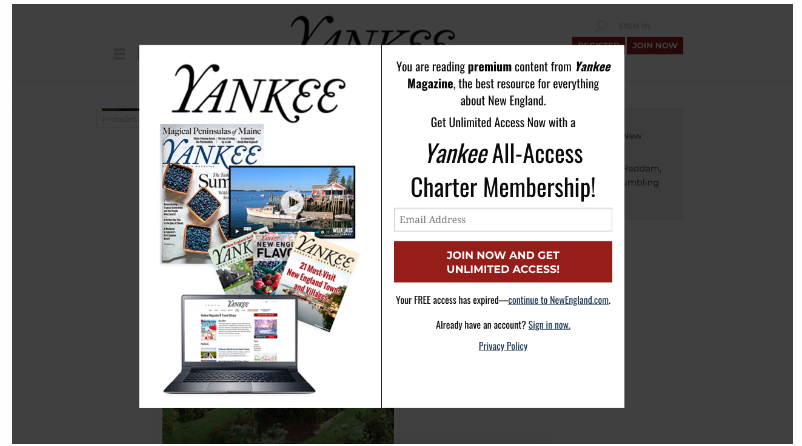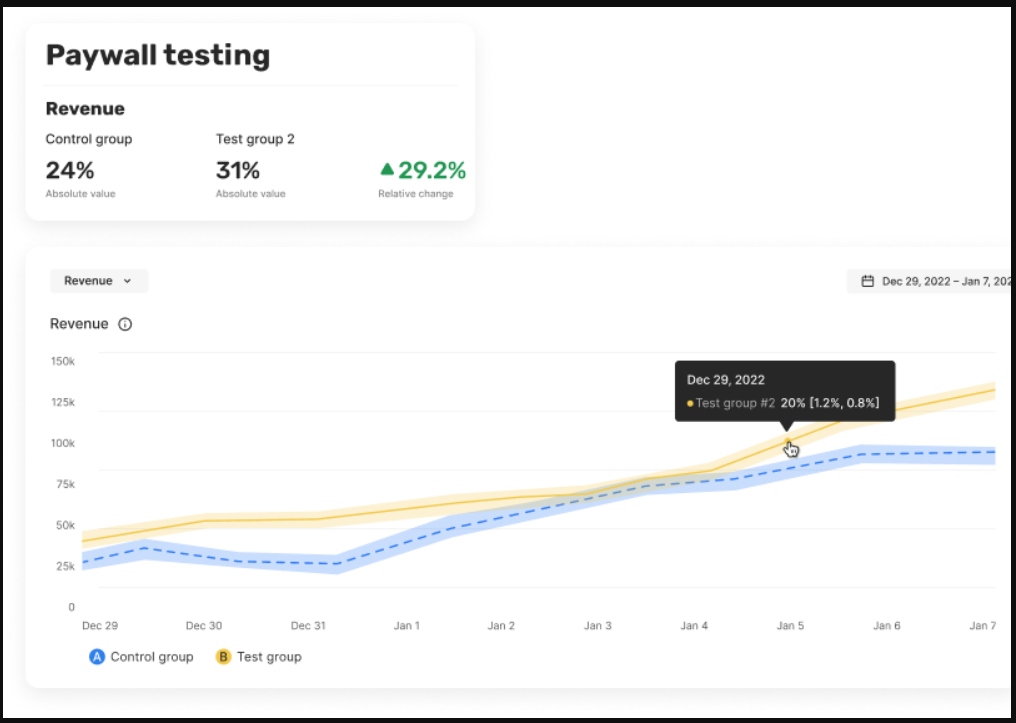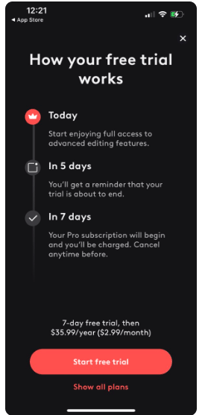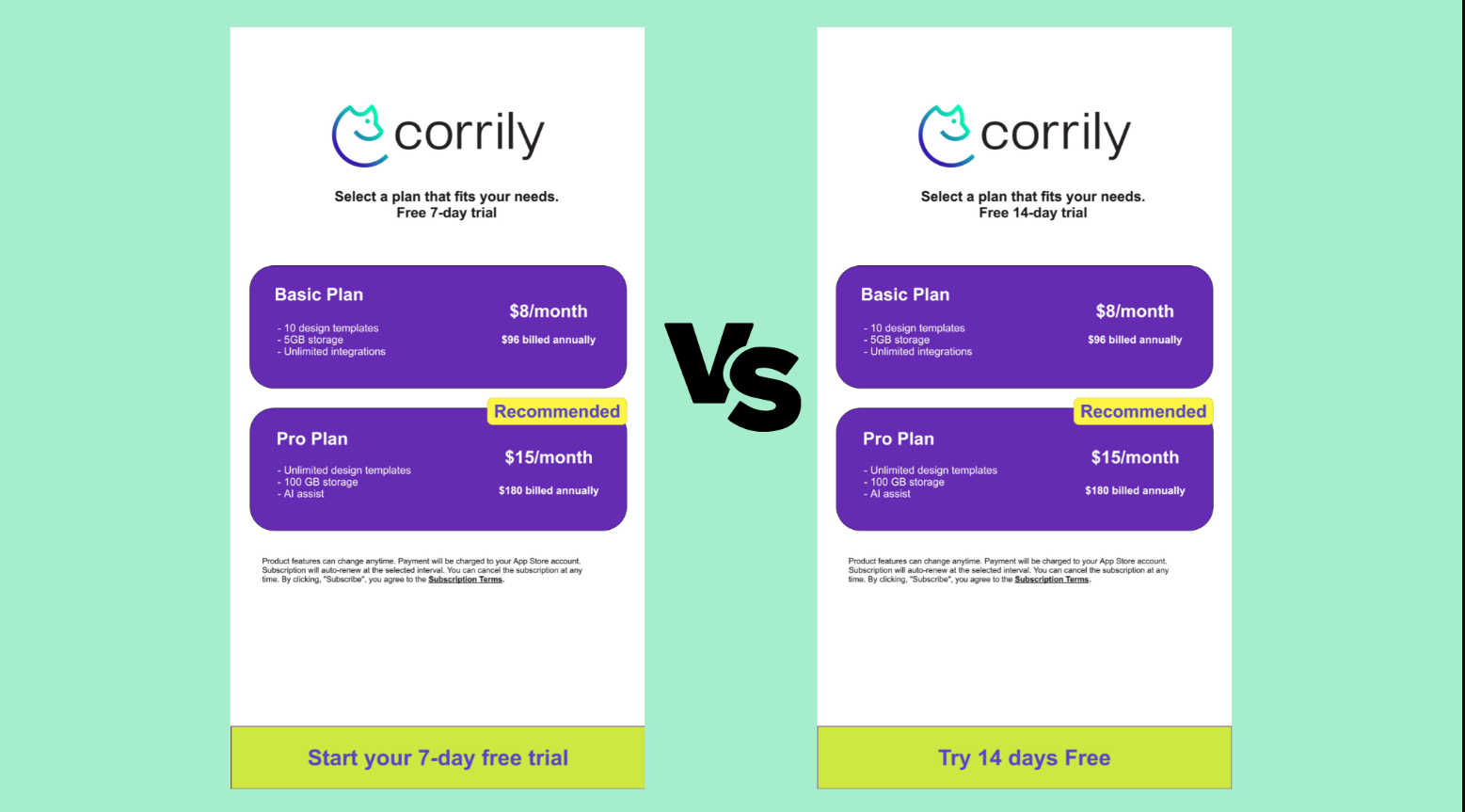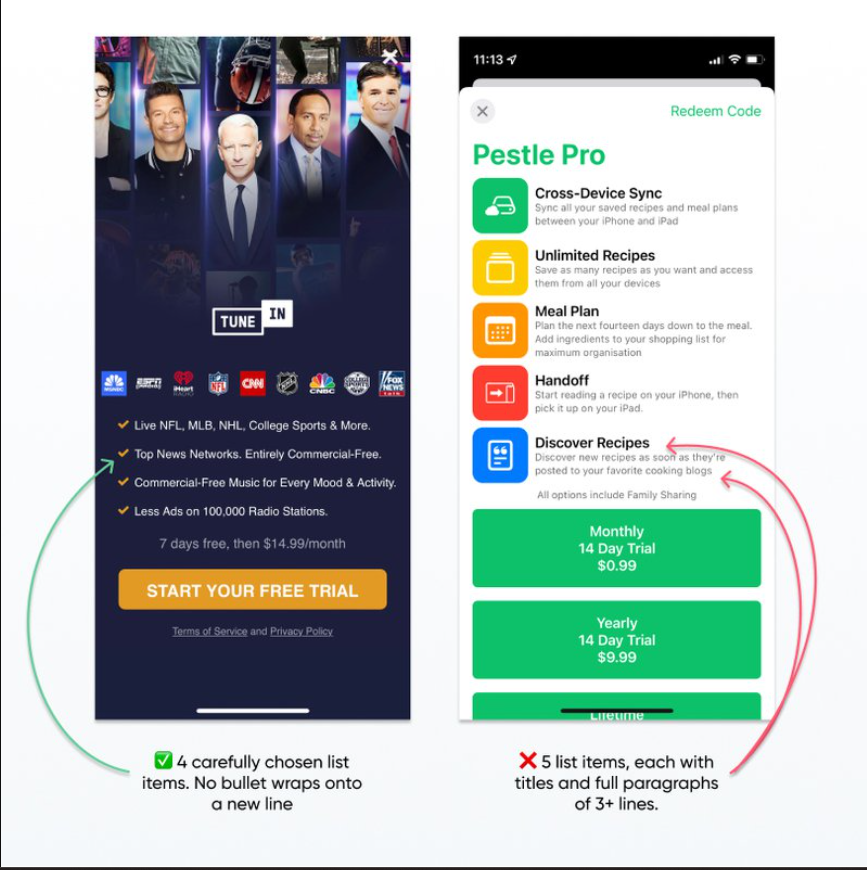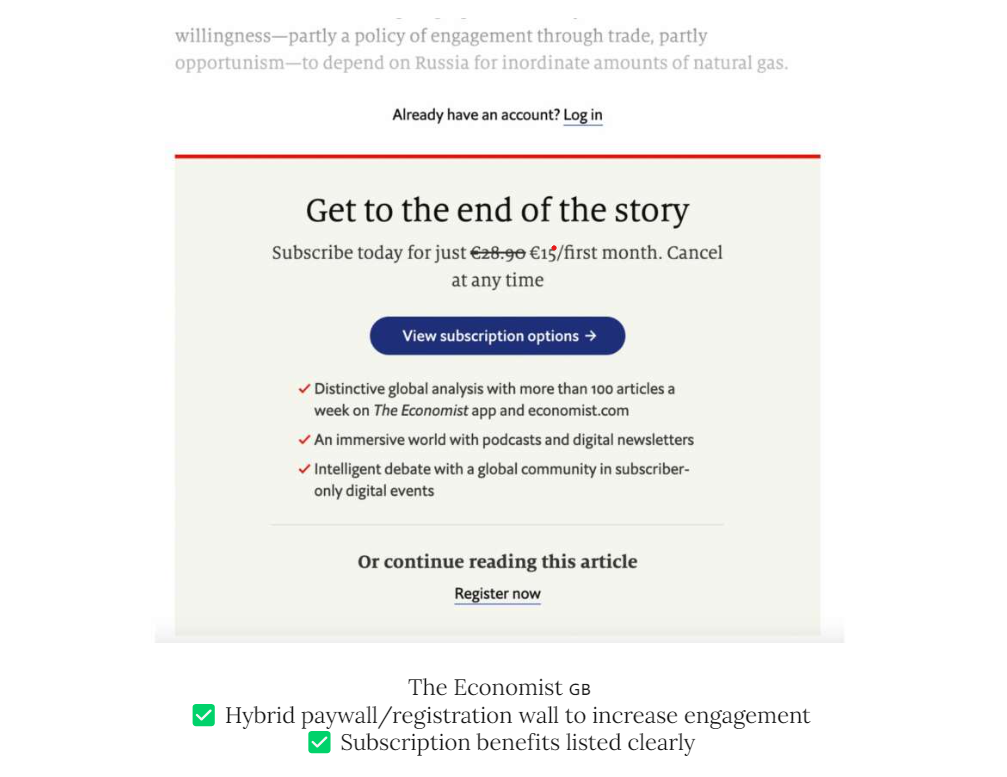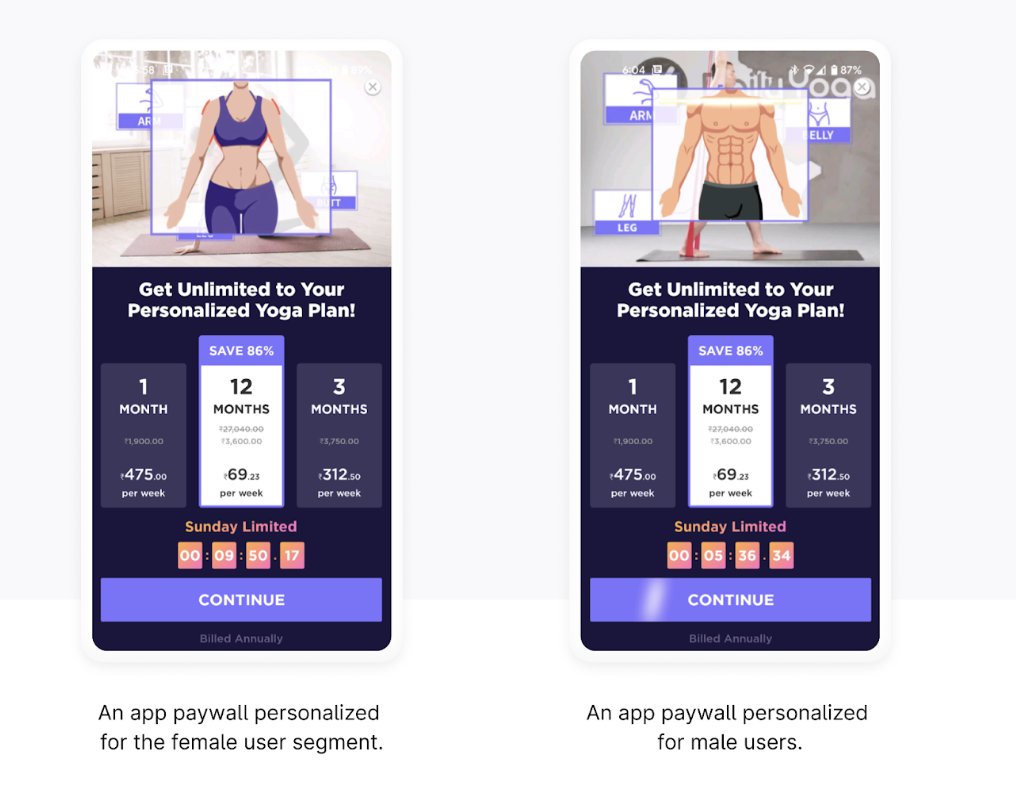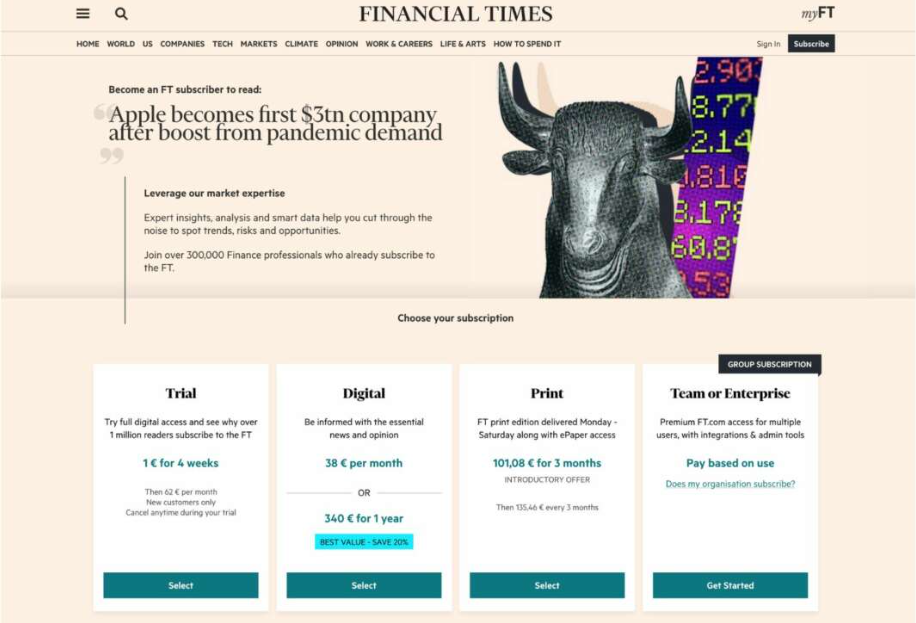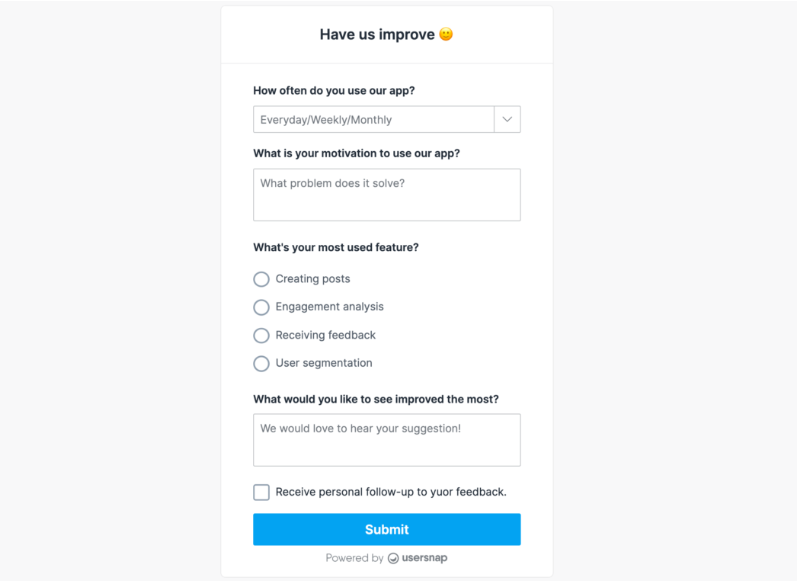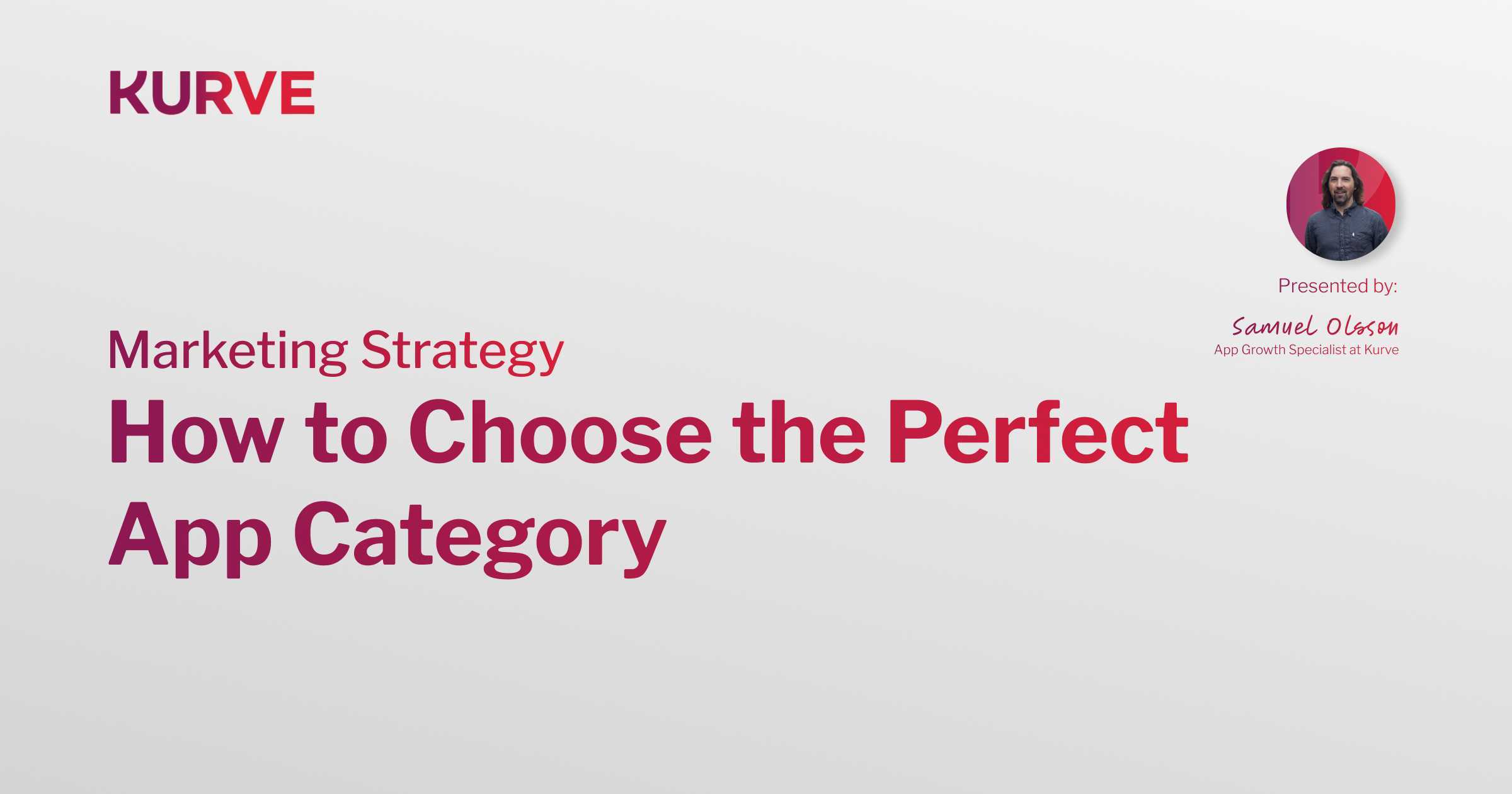10 Ways to Optimize Your Paywall Conversion Rates
Want to monetize digital content as an app creator?
Paywalls could be the answer.
However, only some paywall models are effective. An unoptimized paywall could make your users uninstall your app out of frustration. So, how can you optimize your paywall while striking the right balance between accessibility and exclusivity?
Whether you're new to app development or experienced, this article will answer those questions. We'll also give you actionable insights to navigate the challenges of app paywalls and lead the digital market.
Paywalls are a great strategy that contributes to your overall app marketing strategy; another facet is App Store Optimization (ASO).
| Table of Contents |
What is a Paywall?
A paywall is a digital barrier that stops people from accessing certain online content unless they pay or subscribe. The features locked behind the paywall vary; some examples are app usage, in-app tokens, convenience, and personalization.
Paywalls are increasingly relevant as they empower app creators and businesses to monetize their work sustainably. When users pay to access content, app developers can continue to create high-quality content and reduce their reliance on unpredictable advertising revenue. It also empowers the app user to decide whether to buy the premium features.
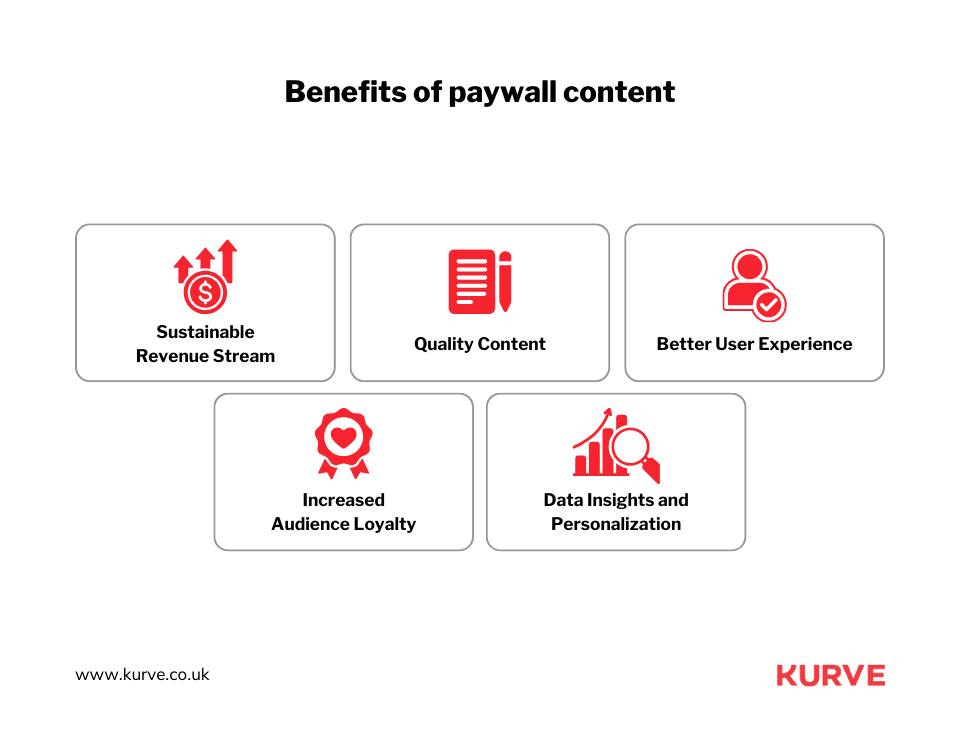
Types of Paywalls
App developers use three common types of paywalls to generate revenue. The type of paywall depends on how the app works or what premium features will be limited.
1. Soft Paywall
A soft paywall lets you access some content for free before then requiring a user to pay. It's like a sneak peek that encourages you to subscribe. This model benefits app developers by attracting more users with free stuff and earning revenue from subscriptions or ads. However, it is challenging to convince people to pay when they're used to free content.
Mobile apps, especially news apps, often use soft paywalls. They offer some articles for free but keep the juicier content behind the paywall, making it tempting for one to become a paying subscriber.
For example, ChatGPT allows you to use the app for free. You can opt to subscribe to use the advanced version GPT-4 alongside other premium perks like priority access and more.
2. Hard Paywall
A hard paywall means you can't access any content without paying first. It's a subscription where you need to unlock everything upfront. This model ensures immediate revenue for content creators but might limit the audience as users can't see anything without paying.
While it guarantees income, it can be a tougher sell for users who prefer free content. Some premium streaming services and online magazines use hard paywalls, requiring payment for full access from the start.
One example is FitnessAI, which provides a free preview mode when installing the app. Its features are only available once the user subscribes by choosing their pricing plan, as shown in the screenshot below.
3. Metered Paywall
A metered paywall allows users to access a limited number of free articles or content within a specific time frame, like a month. Once the limit is reached, users are prompted to subscribe for continued access. This model combines free and paid content, offering a taste of what's available.
It benefits app developers by attracting users with free access while still generating revenue from subscriptions. However, it might be difficult to strike a balance between free and paid content to entice subscriptions. News websites commonly use a metered paywall, providing a set number of free articles before requiring users to subscribe for more.
For example, Yankee Magazine lets users read a limited number of articles per month. When the users reach the limit, the screenshot shows what they see and locks out any further premium content unless the user subscribes.
Reasons for Paywall Optimization
Putting a paywall in place is one thing; ensuring it is optimized to drive conversions is another.
Optimizing paywalls in the digital content landscape can improve user experience, driving more conversions and increasing revenue growth.
Let’s explore the main reasons to optimize your paywalls in more detail.
Increase Revenue
Optimizing paywalls helps revenue by understanding users and making it easy for them to subscribe.
More people will become paying customers when you balance free and paid content and offer fair prices. Simplifying the process and giving good reasons to subscribe makes it more appealing.
Enhance User Experience
Paywall optimization makes it easier and more enjoyable for users to access content.
Understanding user behavior helps place paywalls strategically, ensuring they don't disrupt the app’s flow. This could include clear pricing tiers, comparing the free and paid features, and when the paywall appears when using the app.
Making subscriptions easier and offering clear benefits enhances the overall satisfaction for users. By finding the right balance between free and paid content, users understand what they get when subscribing. It also gives them enough access to features to understand what they need more from the app.
Data-Driven Decisions
App creators can analyze how users interact with content and paywalls to improve conversion rates. Using data helps to understand what works and make real-time adjustments.
Optimization also helps understand user preferences, which tailor app creators' content and pricing models. This creates a feedback loop that allows content creators to stay responsive to changing user behaviors. It ensures that decisions are based on user interactions and preferences instead of assumptions.
Improving Content Value Perception
Placing paywalls and offering enticing incentives helps app users see the worth of subscribing. Adjusting pricing models ensures fairness, contributing to a positive perception of content value.
Simplifying the subscription process and addressing potential barriers also improves the user experience and reinforces the idea that the content is valuable.

When users feel they are getting quality content at a reasonable price, paywall optimization not only increases revenue but also strengthens the perceived value of the content, fostering a positive and lasting impression.
Adapting to Market Trends
As consumer preferences and behaviors shift, paywall strategies must adapt. Optimizations align with market patterns, such as content consumption habits or subscription preferences. This helps paywall models better capture audience interest and boost revenue.
Effective paywall models allow content creators to adjust access levels, pricing models, and content offerings. They do this based on real-time data and feedback. For example, with the growing demand for personalized content experiences, app creators might introduce tiered subscription plans with access to exclusive, curated content.
Content creators can explore pricing models or promotional strategies to capitalize on market opportunities. This includes limited-time discounts, bundle offers with complementary services, or gamification elements to incentivize subscription sign-ups.
10 Ways to Optimize Your Paywall Conversion Rates
We've discussed how optimizing your paywall impacts user experience and revenue and can transform your app’s performance when combined with strategies like app store optimization.
But how do app creators optimize their paywall models? In this section, we’ve explored the 10 best strategies you can apply to your digital platforms.
1. Enhance Paywall Visibility
The key to optimizing paywall models is to manage the right balance of where to give free content and where to lock things behind.
Too few paywalls reduce your revenue, but making your app content too restrictive could cost you your leads. Though people are open to paywalls, many will choose a free alternative rather than pay for content, especially if the users don't trust that subscribing is worth their money.
Finding where to put your paywall needs market research. A study shows that the sweet spot on the paywall visibility must be between 30 to 60%. Newer apps also tend to be more generous with their content, while established brands like The Wall Street Journal have a high paywall visibility rate as more people trust them. But even if your app becomes established, locking more paywalls as you rise in your industry risks losing your user base.
2. Strategic Content Locking
Another aspect of paywall optimization is balancing which content to give for free and which to lock as premium. One popular way to optimize paywall visibility is to give free access to the features the users are looking for when they browse the app stores.
For example, users looking for dating apps for casual chat don't want a paywall right after creating their account. Users looking for generative AI tools may wish to have more tokens or app use, as they could still be learning how to use it.
The point is to put yourself in the shoes of your users. Try to understand that they want to use their apps as soon as they download them.
Once users feel that they trust that they can get more from your app, then that's where you get to build your paywall.
3. A/B Testing
Even good market research on proper paywall optimization is moot if not tested. Here’s the simplest A/B test method:
- Define your goal for the test: What specific element of your paywall are you testing (e.g., wording, button color, pricing tier)? What is your primary conversion goal (e.g., subscribe, start a free trial, enter email)? How much is your preferred sample size and test duration?
- Segment your audience: To ensure a fair comparison, test similar audiences (e.g., new vs. returning visitors, specific demographics). Focus on the segments that impact your revenue the most.
- Start the test: Leverage tools for A/B testing like Apptimize and Hotjar, as they make tracking metrics like downloads and conversion rates during testing easier.
- Gather your data: See which variation is more successful. Choose the metrics you focus on carefully; it’s not simply what gets people to pay more.
4. User-Centric Design
Imagine you're a reader stumbling upon your content for the first time. What experience do you want them to have?
Enter user-centric design. It aims to craft a smooth, intuitive, and frustration-free experience that keeps readers returning for more. In paywall terms, users should instantly understand what content is free, what's locked, and how to access it.
Don't make users have to search for the "Subscribe" button. Use high-contrast colors, clear labels, and large enough sizes for easy tap or click, even on mobile devices.
The checkout process shouldn't feel like crossing an obstacle course. Offer multiple payment options, streamlined forms, and clear error messages.
Every hurdle is a potential exit point; let them subscribe in seconds, not minutes.
5. Personalization
Every app user has individual preferences. It's now a popular and effective trend for successful apps to include personalization to meet these needs. That also includes what your users should pay for.
Create options based on user preferences. Determine which type of content or features a specific user often uses and tailor a subscription plan for it. For example, a generative AI tool often gives a one-time bonus for new users, as the additional AI generation tokens will be helpful for new users to learn how to use the app.
6. Pricing Strategy
How you price your premium features or content isn't simply down to value.
App marketing experts start crafting their pricing strategy through research. Benchmark against competitors, analyze industry trends, and, most importantly, understand your target audience's willingness to pay. What would they consider good value for your content?
Another factor to consider is to focus on the benefit, not just the price. Articulate what sets your content apart and why it's worth paying for. Highlight exclusive content, expert insights, ad-free experiences, or any other unique value proposition that justifies your pricing.
Offer multiple subscription options catering to different needs and budgets, for example, a "Basic" plan for casual readers, a "Standard" plan for regular consumers, and a "Premium" plan for content devotees. Giving users choice and control over their spending makes them feel empowered, not pressured.
7. Seamless Integration
Confusing forms, payment errors, and endless verification steps frustrate potential subscribers, even if you have captivating content. That's why seamless integration is crucial for your paywall's success.
Partner with reliable and user-friendly payment gateways that offer diverse payment options (credit cards, e-wallets, etc.) and boast a secure and seamless checkout experience. Ensure your paywall integrates flawlessly with your website or app: no clunky overlays, jarring transitions, or compatibility issues.
Let users subscribe in a flash with single sign-on (SSO) integration. If they already have an account on your platform, pre-fill the information and allow them to subscribe with a single click.
8. Analytics and Feedback
Don't just guess what users want – listen to their voices and analyze their actions. You can continuously refine your paywall strategy for maximum impact by harnessing the power of data and feedback.
Dive deep into the analytics goldmine hidden within user behavior: track conversion rates, churn rates, content engagement, and popular subscription tiers. Identify patterns, understand user preferences, utilize heatmap tools to visualize user interactions with your paywall and pinpoint areas for improvement.
Another great strategy is to create a dialogue with your readers. Conduct surveys, polls, and user interviews to gather direct feedback on their paywall experience. What do they find confusing? What features would they love? Listen actively and incorporate their insights into your strategy.
Address concerns and showcase positive feedback to build trust and attract new subscribers.
9. Leverage Social Proof
Showcasing the positive experiences of existing subscribers can build trust and convince others to take the plunge.
Feature genuine testimonials from happy subscribers praising the value they receive from your premium content. Highlight specific benefits, solved problems, and positive impacts to resonate with potential subscribers.
Encourage and display positive user reviews from trusted platforms like Google Reviews or independent media outlets. Showcase in-depth case studies demonstrating how your content helped individuals or businesses succeed.
If relevant, partner with respected industry experts or influencers to endorse your content and subscription plans. You can leverage their reputation and reach to attract new audiences and add a layer of external validation.
10. Offer Limited-Time Access or Discounts
Limited-time access or discounts create a sense of urgency and incentivize immediate action, boosting your subscription numbers.
Align your offers with specific goals like launching a new content series, attracting new demographics, or boosting engagement during slow periods. Offer limited-time access to exclusive content or features like in-depth interviews, expert Q&As, or early releases. A sense of FOMO entices users to subscribe to unlock these valuable experiences.
You can also offer limited-time trials with bonus features like ad-free access, personalized recommendations, or access to specific content categories so users can explore the full value proposition and experience the benefits firsthand.
Utilize user data and segmentation to offer personalized discounts or limited-time access tailored to specific interests or reading habits; the more relevant the offer, the more the chance of conversion.
Optimize Your Paywall with Kurve
Optimizing your paywall isn't a one-time project; it's a continuous journey of experimentation, analysis, and refinement.
With these proven strategies, you'll transform your paywall from a static barrier into a dynamic bridge, connecting readers with your premium content and fostering a community of loyal subscribers.
If you're seeking expert guidance on crafting a paywall strategy that converts, reach out to us. Kurve is a team of app marketing experts ready to help you unlock the full potential of your content and turn readers into loyal subscribers.
Visit our blog for more in-depth articles, industry insights, and actionable tips on content marketing, paywalls, and building engaged online communities.
